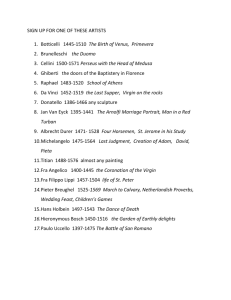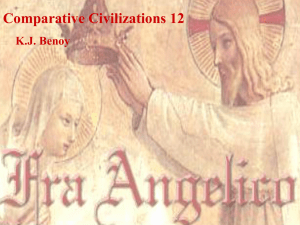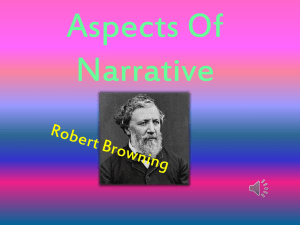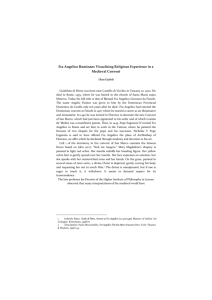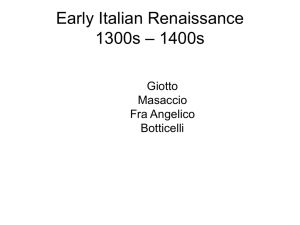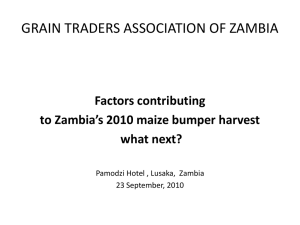Fra Filippo Lippi
advertisement
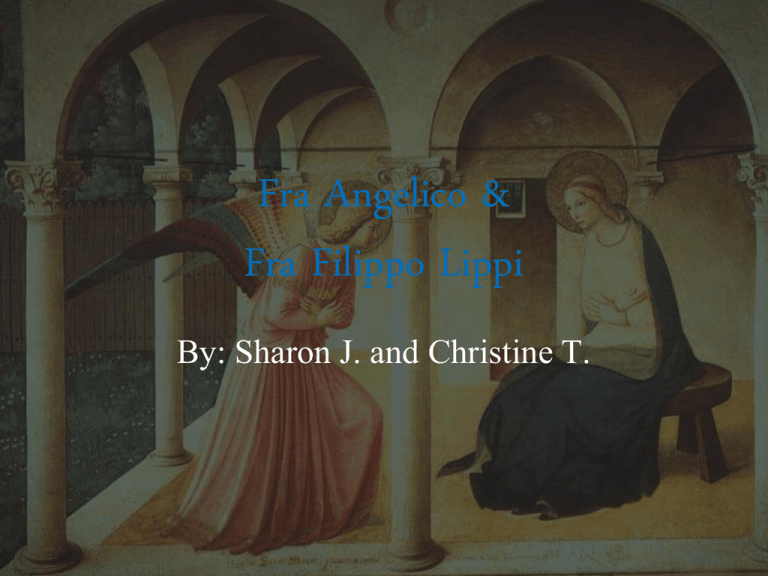
Fra Angelico & Fra Filippo Lippi By: Sharon J. and Christine T. Fra Angelico • “He was kind to other people and moderate, lived chastely and far from the temptations of this world. He would often say that anyone practicing the art of painting needed a quiet and untroubled life, and that the man who portrayed the words of Christ should live with Christ. Fra Angelico • Fra Angelico was born Guidolino di Pietro, around 1395 in Vicchio di Mugello. • He died in Rome in 1455. • He was a contemporary of Brunelleschi, Donatello and Masaccio. Fra Angelico • His work was a product of his life as a monk. • Painting was his vocation and his works were created to adorn churches and monasteries. Fra Angelico • His earliest paintings were probably manuscript illumination. • Fra Angelico’s brother, who entered monastic life with him, was a scribe. Fra Angelico • At Fiesoli he produced his first known works. – An altarpiece for the high altar. – The Annunciateion (now in the Prado). Fra Angelico • His use of perspective is sti in the Byzantine tradition o inverse perspective, placing the viewer as the point of view of the figures in the icon - instead of the other way around. The intent is t place the viewer in divine, not human, space. Fra Angelico • In another work, his Deposition, we see a painting that owes much to Masaccio in terms of its presentation of subjects and space. Fra Angelico H.W. Janson describes Fra Angelico’s art as “…something of a paradox. The deeply reverential attitude presents an admixture of traditional Gothic piety and Renaissance grandeur bestilled by contemplative calm.” Fra Angelico • His St. Nicholas of Bari depicts two miracles of the saint, who appears twice – as a saint in the sky above and thanking a merchant in the bottom left of the painting. Fra Angelico • In 1436 he and his Dominican brothers moved to San Marco, in Florence. • Here, some of his most famous works adorn the monks’ cells. • These were intended to assist in prayer. Fra Angelico • Other hugely important works adorn the altarpiece. Fra Angelico • His fame brought him commissions from two popes. – Eugenius and Nicholas. Fra Angelico • Other important works were commissioned for the cathedral of Orvieto, in Italy. Fra Angelico • This quiet, good man, was beatified by Pope John Paul II in 1984. • The Roman Catholic Church celebrates February 18 as his feast day – commemorating his death in 1455. Fra Filippo Lippi ‘Fra Filippo Lippi was gracious and ornate and exceedingly skilful; he was very good at compositions and at variety, at coloring, relief, and in ornaments of every kind', wrote Cristoforo Landino in 1480; his comment remains a valid assessment of Fra Filippo's style Fra Filippo Lippi As an orphan Filippo was sent to the Carmelite friary in Florence. But he was not temperamentally suited to be a friar. His life is a tale of lawsuits, complaints, broken promises and scandal. Fra Filippo Lippi - Not all Florentine painting during the mid 15th century was of a religious nature, during this time portraiture comes into its own as a major form of artistic expression. - One of the most famous of these portrait artists was Lippi -His painting called Portrait of a Woman and Man 1435-1445 (left) is one of the earliest surviving double portraits of the Renaissance - The exact reason for the painting still remains a mystery Fra Filippo Lippi Madonna and Child with Angles, c. 1455, tempera on wood Fra Filippo Lippi/ linear style/ use of models Fra Filippo Lippi. Madonna Adoring Christ, 1450s
